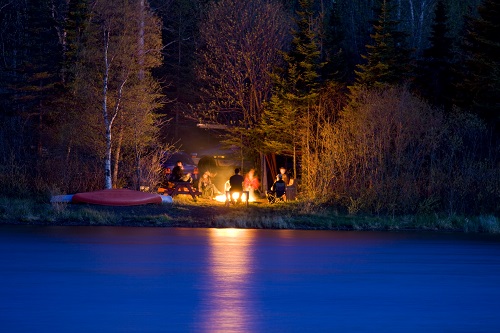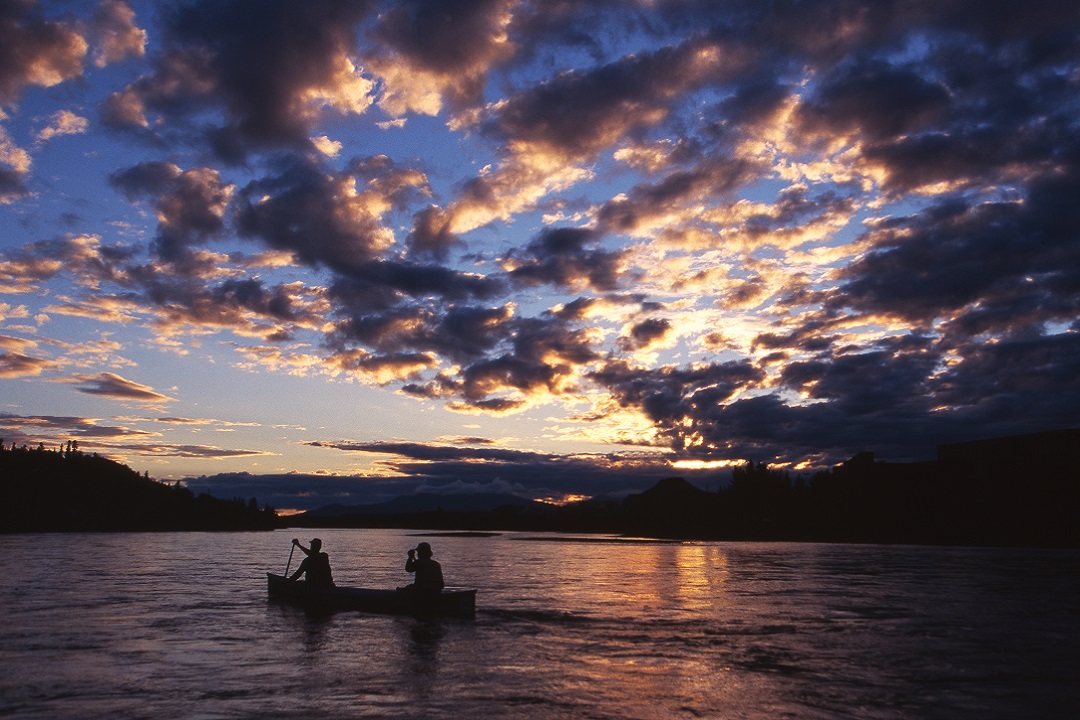Spring has come to the Midwest, and with it better conditions for getting out on Missouri’s many waterways. Be it the Huzzah, the Current, the Meramec, or any of the other rivers or streams that wind through the region — if you’re considering taking your paddling game to the next level with an overnight excursion, we’ve got you covered. We interviewed two local experts to get the tips you’ll need to ensure you don’t find yourself up a creek without a paddle.
“Know your gear and pack your boat before getting to the put-in,” advised Perry Whitaker, avid paddler, Alpine Shop employee, and Missouri State Director for the American Canoe Association. “Most inexperienced overnighters take too much stuff. Load your gear in your boat at home and then figure out what you can leave behind.”
This will help lighten the load and pare down your kit, both of which are good things. “Just because the weight capacity of your boat is advertised to be 300 pounds doesn’t mean you need to cram 299 pounds into it,” Whitaker quipped.
Danny Collins of 37 North Expeditions, which serves Bentonville, Arkansas, and Springfield, Missouri, grew up on the waterways of southwest Missouri. His father took him out as boy and passed on a passion for paddling, thus Collins has spent more time on the Current, Eleven Point, and Jacks Fork rivers (among others) than he can recall.
“Organization is key,” Collins said. “Having your gear organized in a series of dry bags will allow you to keep from having to get in and out of all of the bags throughout the day.”
Nylon straps and bungee cords are important for securing your gear in the boat. “Balance and weighting are critical. As you get more familiar with your setup, how and where you store stuff will become second nature,” he added.
What to Bring
“I always start with the 10 essentials,” said Whitaker — illumination, navigation, first-aid kit, sun protection, emergency shelter, knife/tools, fire starter, extra food, extra clothing, and extra water. “If paddlers have the 10 essentials, they’re more likely to have a safe and enjoyable trip, even if things don’t go exactly according to plan,” he said.

Bring gear that serves dual purpose to conserve space on your overnight paddle.
As for food and water, while having a cooler opens up doors for bringing perishables, those items are typically heavier than freeze-dried meals, and ultimately, space is still at a premium inside the boat.
“A good water filtration/purification system will allow you to avoid bringing a ton of water to last the entire trip,” noted Collins. “Freezing water bottles and using them inside the cooler instead of ice serves a dual purpose. They keep the food cold while frozen and eventually thaw to drinking water.” (Cool tip!)
So, how do you keep from bringing everything and the kitchen sink? For Collins, it’s all about multi-functionality. “You want to bring clothing and gear that serve multiple purposes,” he said. “If something only serves one purpose, that’s the thing to leave at home.”
Trip Planning
When planning a trip, both of our experts stressed the importance of not only checking (and re-checking) the weather forecast, but also knowing the water level of the river. “The water level tells you how fast the river is flowing, which will help you plot your route and stopping points,” said Collins. (Higher water typically means a faster river.)
“Start small,” advised Whitaker. “Go on a few easy, short trips before undertaking a long expedition. You’ll learn ways to improve on every trip you take.”
Start with straight-forward routes and well-trafficked rivers, utilizing the existing infrastructure and campgrounds to get the hang of overnight paddling. Once you’ve gotten the basics down, you’ll be ready to plan your own expeditions and find those “secret” overnight spots.
Speaking of picking a spot to camp, it can be tricky when you’re on an unfamiliar stretch of water. Collins uses a “minimum versus maximum distance” system: “When you’ve reached your pre-set ‘minimum distance’ on the river, start eyeballing the shoreline for a good spot — something protected, near the water, where you won’t have to portage or haul a ton of gear very far.
“If nothing comes along, your ‘maximum distance’ should be at a known, pre-established campsite,” he said.
Collins also notes that setting up (and breaking down) camp when on a paddling trip takes longer due to unpacking/repacking the boat. “Plan ahead to ensure you have plenty of time to get the boat unpacked and camp set up before dark,” he said.
You should also be aware that river levels can change rapidly. Always tie off the boat or, better yet, completely beach it. This will help keep it from floating away overnight.
Learn the Ropes
A great way to learn the ropes of overnight paddling trips is to do one with an experienced group. “The St. Louis Canoe & Kayak Club and Mississippi River Water Trail Association often schedule trips and presentations to help beginners get started,” said Whitaker.
Local outfitter Big Muddy Adventures also offers several fully supported overnight canoe trips during its paddling season.
Of course, the most important thing is to have fun and stay safe. Let someone know your plans and when you’ll be back. Take some form of emergency communication should your phone die (or fall in the river). Being on a body of water means bailing out isn’t always as simple as just getting back to the car. Always have a plan in place should the weather change or things go sideways.
Author: Nick Tilley is a regular contributor to Terrain Magazine.


[…] Previous […]